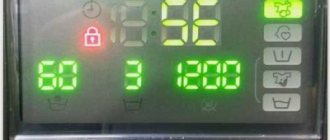Any leak in plumbing or internal communications is a problem associated with financial losses, so it must be resolved immediately. If the toilet leaks after flushing or the sound of a babbling stream is periodically heard from the toilet, it’s time to check the condition of the tank. Do you agree?
We will tell you about the most common breakdowns that occur with plumbing equipment that is mandatory for furnished housing. Here you will learn how to deal with them on your own. Taking into account our advice, you can eliminate such situations and competently repair an important device for life.
The first signs of water leakage
The flush function involves the long-term or short-term flow of water into the toilet bowl in order to cleanse it of waste products. The process begins by pressing the button built into the tank and ends arbitrarily or by pressing it a second time.
Instead of a button, there may be a lever or a handle on a chain, like retro models, but such options are extremely rare.
By pressing the button we control the drain valve. It is connected to a locking mechanism, which, upon completion of the drainage, opens the way for a new portion of water to enter from the cold water system. Thus, flushing occurs only at the request of the user.
If water flows into the toilet after flushing or, even worse, constantly flows in a thin stream, it’s time to check the tank’s fittings - one of the parts has failed.
There are two ways to solve the problem: on your own, by trying to understand the structure of the trigger mechanism, or with the help of qualified specialists - plumbers
But first you need to determine that there is indeed a leak.
Signs of improper drain operation include the following factors:
- constant or periodically appearing characteristic sound of rushing water;
- rusty and limestone stains at the water outlet;
- a constantly wet inner wall of the toilet, close to the cistern, even if the toilet has not been used for a long time;
- an unusually long and weak flushing process - a salvo discharge is considered the norm;
- the appearance of condensate on the pipes and tank, which never existed.
The last symptom is associated with the constant movement of cold water through the pipe, whereas under normal conditions the water is used periodically and has time to warm up to room temperature before it is drained.
If you notice a rusty track or yellowish stains that are difficult to wash off in the water drainage area, you should not stop at just cleaning - you must definitely inspect the tank
Sometimes the cause of leaks lies in the dirt that has accumulated at the bottom of the water tank. In this case, it is enough to thoroughly clean the internal surfaces of the tank. To do this, drain and turn off the water, carefully remove the fittings and, using a brush and cleaning agents, remove the sediment accumulated on the bottom and walls.
If operational cleaning does not help, you will have to become familiar with the design of the drain mechanism.
Repairing and stopping leaks - how to fix and eliminate if water runs in the toilet
What to do if a malfunction is detected? First you need to inspect the float for any malfunctions. If the float lever is skewed, water will not linger in the tank (it will accumulate, overflow and immediately flow out). If distortions and leaks are detected, you should open the lid and simply adjust the lever: install it horizontally, 2.5 cm lower from the entrance of the pipe to the tank.
The float itself should be level and empty. There shouldn't be any water inside. If water is detected inside the float:
- Take it out and drain the water.
- Remove the hole through which water enters (heat the plastic or wrap the float in a plastic bag).
- Attach the float back and watch it (if water gets inside).
Such measures are temporary. At the first opportunity, you should buy and install a new float.
We disassemble the tank device
There are several common reinforcement designs that can be called standard. Among them is an outdated type of drainage device with a rubber bulb, assembled according to the simplest scheme and suitable for tanks with side connections.
This is a rare phenomenon, uncharacteristic of modern models. Let us turn to the current type of fittings, consisting of two modules: drain and float.
The float on a thick metal wire was improved and turned into a more complex structure that shuts off the water supply not from the side, as before, but from below, although side models are occasionally found. The position of the float from them is adjustable, so you can dose a portion of the drained water.
Scheme of fittings. The drain is started by moving a button that is connected to the trigger. When water leaves the tank, the inlet valve opens until the required volume is reached.
Due to the similarity of the fitting models, it is easy to replace the entire structure or change individual parts: the drain float mechanism, the drain lever.
To understand how each element works individually, you can disassemble the model installed in the tank. Of course, before this you need to take safety precautions: shut off the flow of water to the riser or supply line and empty the tank.
All parts can be unscrewed manually or using a set of keys. There are almost no metal parts; instead, only plastic elements have long been used. They are quite durable, do not deform when interacting with hard water, do not rust, and are easy to clean with household chemicals.
In addition to the fixed parts, which are secured with bolts and rubber or plastic seals, there are parts that can be adjusted - the so-called sliders. They can be recognized by small divisions and notches
The sizes and colors of parts from different manufacturers may differ, but the operating principle is absolutely the same. Therefore, if the seal is worn out and a trickle of water constantly leaks from the tank into the toilet bowl, it is not difficult to find a replacement.
To be sure, you can measure the diameter of the ring or simply show the old gasket to the seller.
What is needed for repair?
For repairs, you will need the simplest tools that are found in every home: screwdrivers, a work knife, a hammer, a piece of sandpaper, pliers or a set of wrenches. You will also need sealing material - tow with grease and plumbing sealant.
It is also worth preparing a piece of rags to wipe your hands while working. If the water supply valve for the toilet is located in another room, it is better to work with an assistant.
How to fix a leak with your own hands?
First of all, you need to carefully remove the tank cap. Start by checking the valve that shuts off the liquid supply. Raise the float until the water stops flowing. If the leak is eliminated, you need to adjust the position of the float on the rod.
If this does not help, you need to remove the drain fittings and inspect the condition of the sealing rubber. Often it is enough to clean it of dirt to restore normal operation of the mechanism.
If this does not help, you will have to disassemble the tank in search of failed parts. These could be sealing gaskets between the tank and the shelf, bolts, tightening parts or parts of the drain fittings.
- The float may leak water due to a clogged rubber band. To clean it, you need to disassemble the float lever mounting assembly. After disassembly, the gaskets are washed and the rubber on the lever is replaced (it often develops wear). Video instructions will help you understand how this work is done:
- Another problem area is the rubber locking mechanism. Over time, it warps and the valve begins to jam. The problem is that with the low cost of the gasket itself, this part may not be available in the store. Buying entire fittings (for 800–900 rubles) for the sake of a 15-ruble elastic band is unprofitable. It is worth choosing a more or less suitable elastic band from the domestic range, cutting it and putting it in place. We offer video instructions for this operation:
- If you decide to change the entire fittings, you will have to turn off the water supply and empty the tank. Then unscrew the water supply hose with a wrench (a little liquid may spill out - replace the container). Then unscrew the fasteners and remove the tank. This will allow you to get close to the plastic nuts holding the reinforcement. We unscrew them, remove the shut-off valve and the float assembly, and install new parts. All stages of work are shown in the video:
Such repairs are already quite complicated for a novice plumber; it is better to seek help from an experienced specialist. But if this is not possible, you can figure it out yourself. The main thing is to do everything slowly, periodically checking the instructions for the fittings. Good luck with your work!
Preventive measures against leakage
To prevent a leak in the toilet from occurring at the most inopportune moment, it is worth monitoring the condition of the tank fittings and regularly carrying out preventive measures.
The main and at the same time the simplest thing is to clean all parts, as well as the internal surfaces of the tank. Upon careful examination, you will notice that even in a short time the walls and bottom are covered with a red coating, mineral deposits and even a substance similar to silt. The composition of contaminants depends on the quality of the water.
To minimize the entry of various contaminants into the tank, the internal wiring must be equipped with filters. They are installed on the cold water supply next to the riser
From time to time it is advisable to check the condition of the sealing elements, fasteners and parts that are located at the joints in order to anticipate the occurrence of a strong leak. A small amount of moisture indicates that the connection is leaking. Accordingly, you need to tighten the nuts or replace the seal.
Timely minor repairs and regular cleaning will save you from leaking water into the toilet, and therefore from unnecessary costs. An important factor that ensures saving water, clogging and breakdowns is the correct setting of the fittings, the specifics of which we recommend that you familiarize yourself with.
Required tools and materials
If your plumbing is leaking, you must turn off the water before making any repairs. Due to the fact that the liquid is supplied to the system under pressure, in the process of troubleshooting we can flood the premises. For repairs you will need the following tools:
- sealant suitable for plumbing fixtures;
- sandpaper;
- screwdriver;
- burlap, twine or tow;
- hammer;
- knife;
- pliers;
- If it is necessary to replace a component, a working part of a certain type will be required.
When the necessary tools have been collected, you can begin to carry out repair work.
Manifestation of a leak at the bottom of the toilet
The reason when there is a leak from under the toilet and wetness appears on the floor may be depressurization of the joints between the toilet parts and the sewer system.
Identifying the cause of the breakdown
The location of the breakdown can be easily detected by a rusty trace if the problem has not been corrected for a long time.
There are several reasons for a toilet leaking from below:
- If the connection between the toilet and the sewer pipe was made with cement mortar, then over time it delaminates in the cast iron socket. Thus, depressurization of the joint occurs. This will be the cause of the breakdown;
- if a gap appears between the toilet outlet and the cuff (or corrugation) due to wear of this sealing joint. The problem occurs for natural reasons. Rubber tends to lose its strength over time.
- if a crack appears inside the bowl;
- if the earthenware base of the toilet or the leg has cracked;
- the design of the plumbing fixture is not securely attached to the floor covering.
Elimination of leakage at the bottom of the structure
Many problems can be resolved without calling a specialist. To do this, you need to purchase materials and stock up on a set of tools.
- For example, a chisel is used to remove old broken cement mortar from a cast iron socket. A new solution or silicone sealant is applied to the cleaned joint to strengthen the sealing of the joint.
When all joints have been re-processed and a new layer of sealant has been applied, it is not recommended to use the toilet for its intended purpose within 24 hours.
- When dismantling the toilet is not difficult, the damage is eliminated by replacing the cuff. It’s worth thinking about what to do if the seal cannot be updated. Then it is recommended to lubricate the entire circumference of the outlet and the bell with sealant. Having previously moved the seal. There will be enough space to apply silicone sealant.
- When a toilet leaks as a result of a crack inside the bowl, its surface is restored with epoxy resin. Small holes are drilled in the places where the crack stops. The problem area is treated with sandpaper. The top is treated with resin. Do not use the device until the applied material has dried.
- A water leak at the base with a crack can only be eliminated by replacing it with a new structure. Repair work will not bring the desired result, and the problem will appear again.
- It is worth checking the fastening parts for integrity. If the threaded connections are not broken, then it will be enough to just tighten everything and the toilet will fit firmly into place.
Reasons causing the problem
There are several reasons that can cause the problem of water constantly running in the toilet. To eliminate the consequences, it is imperative to understand what is going on.
Focus on the following:
- Damage to the design of the tank itself. This is the most common reason for continuous drainage of water. The design of the tanks is not that complicated, but each element must be maintained in good condition. Most often, problems arise with water shut-off valves. In this case, the water constantly rises, there is so much of it that it finds a natural outlet. The problem is dangerous because the liquid can not only flow down the standard channel, but also pour out over the edges of the tank.
- Damage to the tank itself. Cracks may form in containers for various reasons. They cause constant water leakage.
- Malfunctions in the bowl, in the drainage area. To eliminate the problem, it is necessary to carefully examine not only the tank, but also the other components of the overall structure. There will definitely be problems in one of the nodes.
Having found the cause of the problem, it is necessary to carry out repairs, eliminating the consequences. Each individual case has its own method of dealing with problems.











